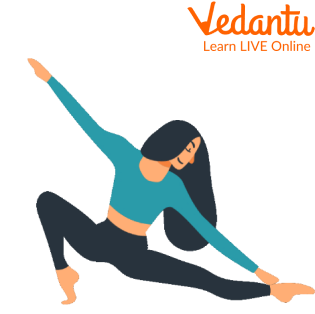




Overview of Body Health
Healthy lifestyles are very important for people of all ages. It's the best way to stay healthy and strong while also leading a happy and comfortable life. People who adopt healthy lifestyles have fewer health problems and live longer than those who don't. They are also more productive at work. Living a healthy lifestyle is easy if you know what to do and avoid doing the wrong things. To live a healthy and happy life one should eat a healthy diet with a combination of all nutrients. Let’s now discuss in detail How to Keep Your Body Healthy and some healthy fun facts.

Healthy Lifestyle
Facts About Healthy Lifestyle
Some facts one should know to live a healthy lifestyle:
Physical health is extremely important when it comes to living a healthy lifestyle. You need to take care of your brain and your heart to have a good sense of well-being. Regular exercise keeps you fit and strong as well as confident and calm. It also helps you control your weight and promote good eating habits. People most prone to poor physical and mental health should focus on maintaining their health with these measures first.

Regular Exercise
Positive thinking is crucial for a happy and healthy life. People with mental illnesses can get better if they believe in themselves enough to get help. Exercise also increases blood circulation and reduces stress; it even helps you control your eating habits. In addition, keeping healthy friends allows you to socialize with positive people which can be very beneficial.
Healthy Lifestyle
Regular physical activity keeps your body strong and healthy. It promotes wellness by keeping your body safe and healthy. It also helps you control your weight. People tend to gain weight when they're not active. However, being active reduces the number of calories you consume. This makes it easier to lose weight and stay healthy. Therefore, everyone should engage in some physical activity daily.
1. Dancing is a form of physical activity that's fun and safe. It's also a good form of exercise for the body and mind. Certain types of dancing burn extra calories and keep you active at the same time. Additionally, dancing helps with balance and post-surgical mobility for people with joint problems or injuries. Schools typically require students to participate in physical education (PE) classes- where most dancers learn moves.
2. Sports are another way to stay active and make friends. Popular sports include football, baseball, basketball and hockey. These sports are good for your health as they focus on cardio workouts. It also strengthens your body with weights and strengthening exercises such as squats, deadlifts and bench press exercises.
Physical activity is important for your health; it keeps you healthy and strong while keeping you flexible and cheerful.
Facts About Balanced Diet
Eating healthy is an essential part of maintaining your health. Healthy people are happy and healthy people are also rich and successful. Healthy people also make healthy food choices. Eating healthy makes you feel much better. Most people don't know how to eat healthily.
Your diet should consist of plenty of fresh vegetables, fruit, whole grains and protein foods. All of these make you feel great and keep your body strong. You should eat at regular intervals throughout the day. This helps your body get enough food to stay healthy. It also ensures that you're not overeating and putting excess weight on your body. You should avoid junk foods since they're not good for you and make you obese. Instead, eat natural foods that nourish your body and give it the strength it needs to function correctly.

Chart of a Balanced Diet
Your body will let you know if you're eating correctly. If you're overfed, it will start putting weight on itself quickly. You'll also have digestive problems, skin issues and bad hair and teeth growths as well as other internal problems. If underfed, your body won't have enough strength to fight off diseases or recover from illness as well as it should. You should also have weak muscles, poor eyesight and slow hair growth when underfed. Your body will let you know if you're eating correctly. So consuming a balanced diet including all the nutrients in our meal helps us in leading a healthy lifestyle.
Summary
There is a ton of advice and healthy fun facts out there on how to achieve a healthy lifestyle, here are some key factors to keep in mind: Drink more water. Get enough sleep. Exercise. Eat more fruits and vegetables. Cut down on processed foods. In this article, we learnt that a healthy lifestyle means having a balanced diet with equal portions of all the nutrients the body needs. Carbohydrates, Vitamins, Minerals, Proteins, and Fats all play an important role in making us balanced. So, try to include all these in your diet. Living a healthier lifestyle means a lower risk of developing many diseases. We hope you enjoyed reading this article, in case of any other doubts, feel free to ask in the comments.
FAQs on Facts About Balanced Diet
1. What is a balanced diet and why is it important for students?
A balanced diet is a meal plan that provides the body with all the essential nutrients in the correct proportions. These nutrients include carbohydrates, proteins, fats, vitamins, minerals, and water. For students, it is especially important as it provides the necessary energy for physical activities, improves concentration for studies, supports proper growth and development, and strengthens the immune system to fight off illnesses.
2. What are the main food groups that should be included in a daily meal plan?
To ensure a balanced diet, your daily meals should include foods from the following five main groups:
- Carbohydrates: For energy (e.g., rice, chapati, bread, potatoes).
- Proteins: For growth and muscle repair (e.g., dal, milk, eggs, paneer).
- Fats: For energy and vitamin absorption (e.g., nuts, seeds, ghee, oil in moderation).
- Vitamins and Minerals: For protection against diseases (e.g., fruits, green leafy vegetables, salads).
- Fibre and Water: For proper digestion and hydration.
3. What is the role of carbohydrates in a balanced diet?
Carbohydrates are the body's primary source of glucose, which is converted into energy. This energy is essential for all bodily functions, from breathing and thinking to running and playing. Including a sufficient amount of carbohydrates from sources like whole grains ensures a steady supply of energy throughout the day, preventing fatigue and helping maintain focus in school.
4. How does eating a balanced diet help in preventing diseases?
A balanced diet acts as a protective shield for the body. Vitamins and minerals, found in fruits and vegetables, boost the body's immunity to fight off common infections like colds and flu. Adequate fibre helps in maintaining a healthy digestive system, while a controlled intake of fats and sugars helps prevent long-term lifestyle diseases such as obesity, heart problems, and type 2 diabetes.
5. Are all fats unhealthy? Explain the role of healthy fats.
No, not all fats are unhealthy. While it's important to limit junk food containing unhealthy trans fats, the body needs healthy fats (like unsaturated fats) to function correctly. Healthy fats are crucial for brain development, providing energy, and helping the body absorb certain vitamins (A, D, E, and K). Good sources of healthy fats include avocados, nuts, seeds, and olive oil.
6. What are the consequences of not eating a balanced diet, especially during school years?
Not eating a balanced diet during school years can have several negative consequences. A student might experience:
- Low energy levels and constant tiredness.
- Difficulty in concentrating and poor academic performance.
- A weakened immune system, leading to frequent illness.
- Stunted growth and improper physical development.
- Long-term risks of nutritional deficiencies or obesity.
7. How can a student create a simple balanced diet chart for their daily meals?
A student can create a simple chart by ensuring each meal is a mix of different food groups. For example:
- Breakfast: A glass of milk (protein), with poha or a whole-wheat sandwich (carbohydrates and veggies).
- Lunch: A bowl of dal (protein), chapati or rice (carbohydrates), a portion of seasonal vegetables (vitamins/minerals), and a side of salad (fibre).
- Dinner: A lighter meal with paneer or chicken curry (protein), with one or two chapatis (carbohydrates).
- Snacks: A piece of fruit, a handful of nuts, or yoghurt.
The key is to include a variety of colourful foods and avoid processed items.









